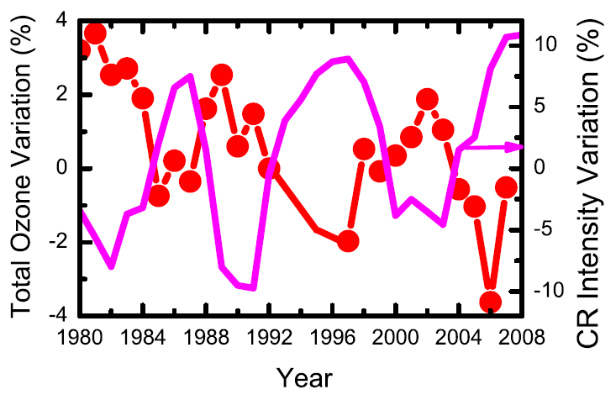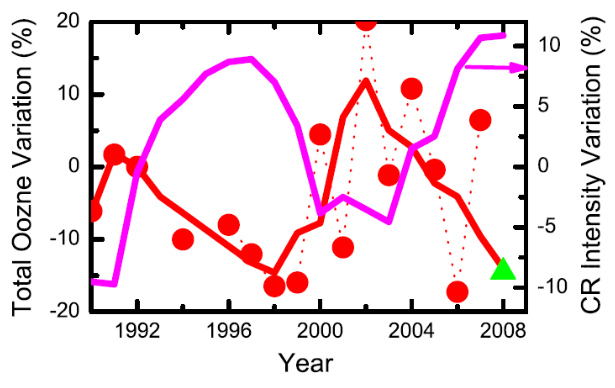There is interest in studying the effects of galactic cosmic rays (CRs) on Earth's climate and environment, particularly on global cloud cover in low atmosphere (3 km) [1 - 5] and ozone depletion in the stratosphere [6 - 16]. The former has led to a different scenario for global warming, while the latter has provided an unrecognized mechanism for the formation of the O3 hole. The discovery of the CR-cloud correlation by Svensmark and Friis-Christensen has motivated the experiments to investigate the physical mechanism for the correlation. In contrast, the CR-driven electron reaction mechanism for
O3 depletion was first unexpectedly revealed from laboratory measurements by Lu and Madey. Then the evidence of the correlation between CRs, chlorofluorocarbon (CFC) dissociation, and O3 loss was found from satellite data by Lu and Sanche: the O3 hole is exactly located in the polar stratosphere and at the altitude of 18 km where the CR ionization shows a maximum.
CRs are the only electron source in the stratosphere, while halogen(Cl, Br)-containing molecules are long known to have extremely large cross sections of dissociative attachments of low-energy electrons. The latter reaction will be greatly enhanced when halogenated molecules are adsorbed or buried at the surfaces of polar molecular ice, relevant to polar stratospheric cloud (PSC) ice in the winter polar stratosphere, as firstly discovered by Lu and Madey and subsequently confirmed by others in experiments and theoretical calculations.

period of 1980-2007. The CR data (solid line) were averaged from 3 station measurements (McMurdo, Thule, and Newark) of the Bartol Research Institute [27], while ozone data (solid circles + line) were obtained from NASA TOMS/OMI satellite datasets [28]. The ozone data were relative to the value at 1992.

Read the paper here. This was first reported last year in this story here. Another nail in the coffin for the CFCs role in the ozone hole - first challenged in 2007 here in a Nature article.



Reader Comments
to our Newsletter